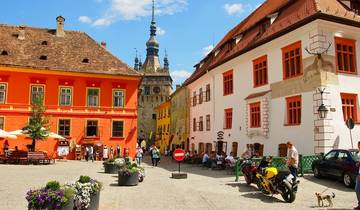
When embarking on a journey, the dilemma of opting for tourist prices versus standard prices is essential for travelers mindful of their budget. Many times, travelers inadvertently select the higher-priced choice due to dual pricing structures, where locals and tourists face different charges. This phenomenon can be observed in various instances, including taxi fares, market costs, and entry fees for attractions. In certain nations, such as Mexico and Peru, tourist pricing is officially embedded in the system, complicating efforts to evade them.
Dual Pricing Structures
Travelers often come across varying prices for residents and visitors. This is apparent in cases where a taxi driver charges a local one amount and a tourist a different one, or where a market vendor sets distinct prices for locals and tourists. In some regions, official tourist pricing is implemented for entrance fees to museums and attractions, making it challenging for visitors to avoid higher payments.
What you can do about it: While bargaining might be effective in some situations, it is usually advisable to take the scenario as a means of supporting the local economy. Enlisting a local acquaintance for significant purchases or simply accepting the elevated price for minor items can assist in managing expectations and diminishing stress.
Tourist Areas Versus Local Areas
Areas frequented by tourists generally feature inflated prices for food, lodging, and other services. Well-known locations like St. Mark’s Square in Venice or Times Square in New York City exemplify places where prices surge due to tourist interest.
What you can do about it: To sidestep these elevated prices, consider venturing to spots away from the primary tourist attractions. Strolling a few blocks from the tourist hubs can often reveal more budget-friendly choices.
City Versus Mid-sized City and Rural Prices
Costs in large cities can be considerably steeper than in smaller towns or rural locales. For example, during travel in India, expenses in Mumbai or Delhi may be significantly higher compared to other regions of the country.
What you can do about it: After exploring the key attractions in a city, think about checking out mid-sized towns or rural areas to extend your budget further.
Peak Season Versus Other Seasons
Traveling during peak season frequently results in the highest charges for lodging, food, and activities. Sellers and service providers are keenly aware of the heightened demand and adjust their pricing accordingly.
What to do about it: To evade elevated prices, consider traveling during shoulder seasons or choosing destinations where peak times are not in effect. This approach can lead to substantial savings and a more enjoyable experience.
Costly Destinations Versus Inexpensive Destinations
The expense of travel can vary greatly by destination. For example, an evening out in Stockholm can cost much more than in Bulgaria. Carefully selecting destinations can significantly affect your travel budget.
What to do about it: Conduct research and select destinations recognized for being budget-friendly. Resources like The World’s Cheapest Destinations can offer valuable guidance on economical travel opportunities.









